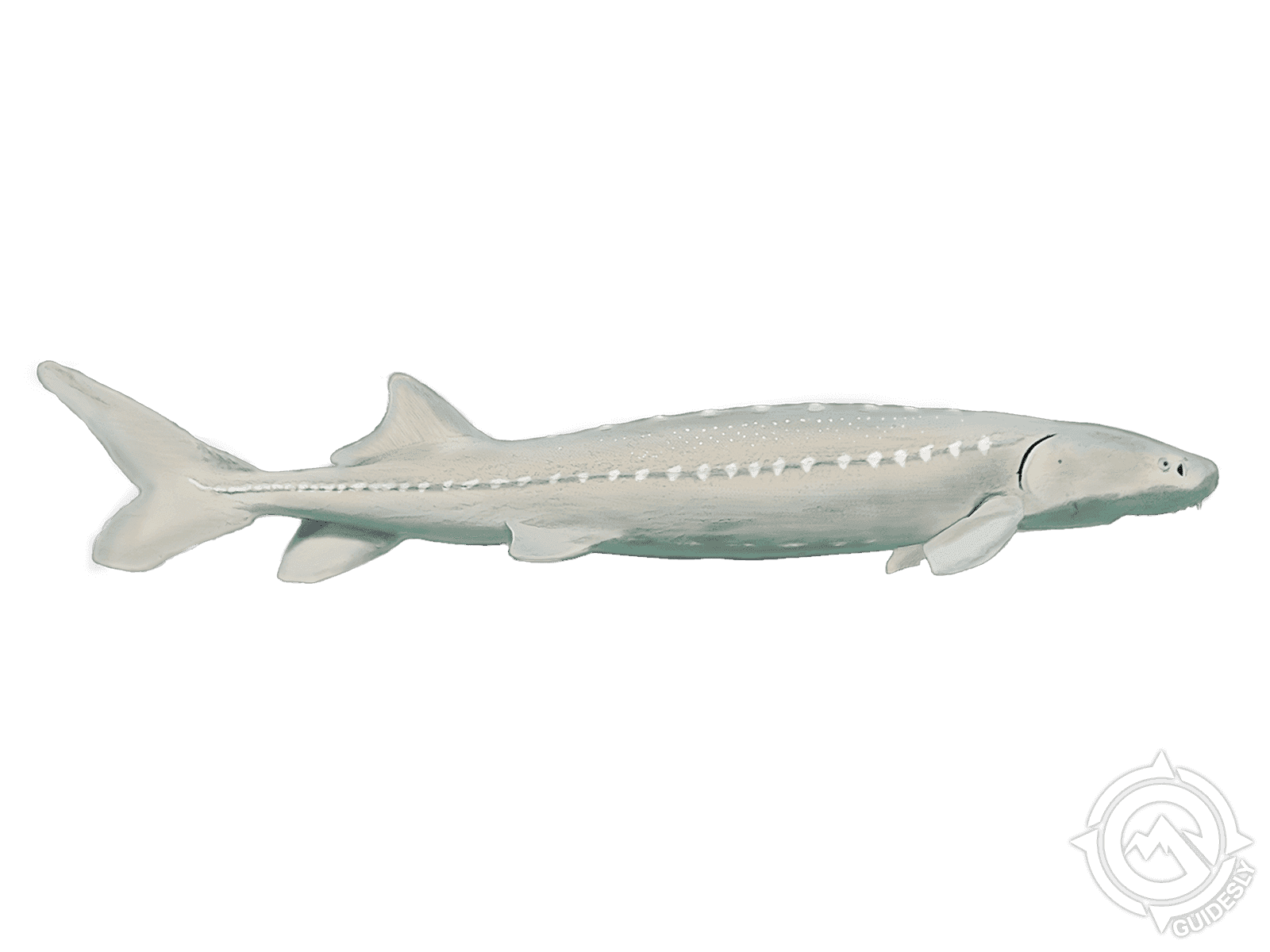White Sturgeon

Species Details
Acipenser Transmontanus
Acipenseridae
Acipenseriformes
Onshore
1 - 1100 lbs.
1" - 148"
White Sturgeon (Acipenser transmontanus) Fish Description
The White Sturgeon (Acipenser transmontanus), also known as Pacific Sturgeon or Sacramento Sturgeon, is a huge anadromous game fish mostly found in some large North American rivers that drain to the Pacific Ocean. Though it’s born in freshwater, it usually swims to the ocean and spends most of its life in saltwater; returning to freshwater only to spawn. Its long and cylindrical body is mostly light grey in color and its belly is white. Instead of scales like other fishes, it has five rows of white scutes—an external bony plate—along its body to protect its body from environmental abrasions as well as from predators. Its toothless mouth is protruded and its nose is pointed to help in burrowing for food on the sea floor. Plus, the barbels located near the front end of its long nose makes it possible for it to “feel” its surroundings.
Interesting Facts About White Sturgeons
- It’s the largest freshwater fish in North America.
- It’s anadromous—a fish born in freshwater but spends most of its life in saltwater.
- It returns to freshwater to spawn.
- The largest ever caught on record weighs around 1,100 pounds, measuring 12 feet and 4 inches.
- It was caught in July 2012 in Fraser River in British Columbia, Canada; and was released back to the water.
- It’s carnivorous but it doesn’t have teeth.
- It eats by sucking on its prey.
- Its taste buds are located on the outside of its mouth.
- Instead of scales, they a long bony plate called scutes that protect them.
- It’s covered with a rough sandpaper-like skin.
- It has cartilaginous bones, much like sharks.
- It eats shrimps, clams, crabs, worms, mussels, snails, and small fishes.
- It can live to a hundred years or even more.
- Males and females release their sperm and eggs simultaneously during spawning season.
- Sperm and eggs mix together in the water current.
- Females can release up to 3 million eggs in a single spawning season.
- Once fertilized, the eggs sink to the river bottom and sticks rocks and other underwater structures.
- Commercial fishers fish for the fish species not just for its meat but for its highly valued roes that’s eventually made into caviar.
- With the combination of overfishing, habitat destruction, and pollution, White Sturgeon populations have dwindled during the late 1800s up to the early 1900s.
- Populations declined steadily up to the early 1990s.
- The fish was listed as an endangered species in the 90s.
- Joint American and Canadian regulations, monitoring, research, fish passage and habitat restoration were placed to help the species survive.
- White Sturgeon populations have since then become stable.
Where to Find Them
As earlier noted, they live most of their lives in the sea; though, they were born in the freshwater and only go back during spawning season. You can find them usually near the shores of the Pacific coast—as far north as Alaska and as down south as Northern Baja, California. And when spawning season comes, which starts from early spring until May or June, many of them would travel inland. This means you can also fish for them in estuaries, rivers, and even streams during this time.
White Sturgeon Fishing Tips
As with any other game fish, using live baits is said to be more effective than using artificial lures in catching this large fish. White Sturgeons aren’t particularly picky when it comes to baits but many anglers have been successful using squid, smelt, herring, salmon, and other fish. You would also need a stout tackle with a heavy rod and an 80lb braided line for you to be able to match this fish’s weight and size.
One last thing to remember about fishing for this fish is that even though it’s a huge fish, it often bites very gently. This means that it would nibble on a bait for some time without actually eating the whole thing. And when they feel even a bit of resistance, they would drop your bait entirely. So when you’re fishing for this monster of a fish, patience is definitely key to success. If you feel a little tug on your line, don’t get overexcited and start reeling in; just keep calm and keep your rod steady until you feel a harder tug—and that’s when you start reeling in fast.







